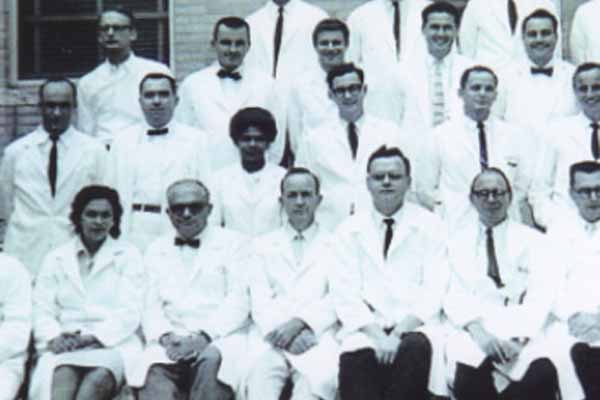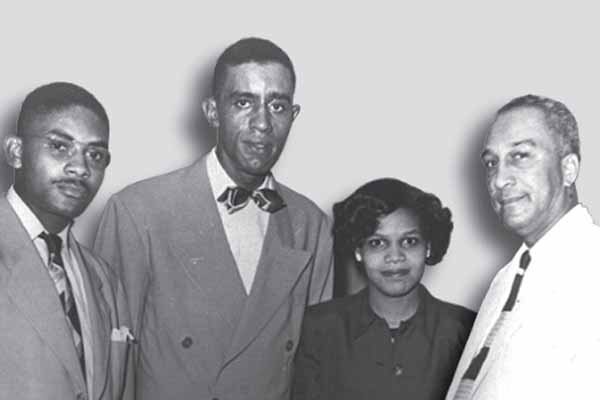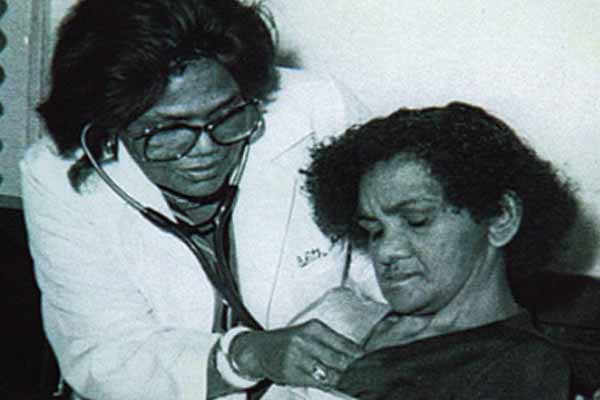
Never fail to give” was a lesson instilled in Edith Irby Jones, MD, from an early age and one the pioneering African American physician practiced until her death on July 15, 2019, in Houston at age 91.
Dr. Jones was the first black student to attend and graduate from an all-white medical school in the South. With her passing, Texas and the nation lost a remarkable physician who devoted her life and career to opening doors and caring for anyone, regardless of their ability to pay.
Houston endocrinologist Carlos Hamilton, MD, had the opportunity to meet Dr. Jones, a well-known figure in the city where she spent most of her medical career as an internist and accomplished other “firsts.”
“Having gone to medical school was quite a feat, and having gone to medical school as an African American was an even greater feat, and to be an African American woman and go to medical school was almost unheard of, if not considered impossible. But she did it, and she not only did it, she did it very well,” he told Texas Medicine.
Dr. Jones shares a story of humble origins and big aspirations in a lengthy 2006 interview she gave to the University of Arkansas Pryor Center for Arkansas Oral and Visual History.
She was born near Conway, Ark., on Dec. 23, 1927, and grew up in Hot Springs. Her father was a sharecropper, but the family – her parents and two siblings – were not destitute. They lived in a three-room house surrounded by vegetable gardens, and her father owned a horse and buggy, and a Model T Ford. In her youth, Dr. Jones attended school and went to church on Sundays, which sparked one of her earliest childhood memories.
She was wearing a stiffly starched white organdy dress in the back of the church when her father asked if she would like to tithe the pennies in her purse to the church. “No, no, Papa,” Dr. Jones recalled in the interview. “I want to keep my money.”
But her father told her that when one gives, one receives more in return. Dr. Jones went to the front of the church and placed her pennies on a table and waited. She expected an immediate return on her investment.
After a while, her father came to the front of the church and asked what she was doing. “I was waiting to [get] my money back, and more,” Dr. Jones said. Her father then told her, “When you give … it may not come back at the same time nor from the same source that you gave it to.”
That message became a lifelong philosophy for Dr. Jones.
“It was,” she later reflected in the oral history, “the greatest lesson I have ever learned.”
But that very same day, life also dealt Dr. Jones a cruel blow. After church, her father went horseback riding. When he dismounted, his horse was stung by a bee, causing it to rear up and kick him in the chest. He was placed on a wagon and brought home. That day, Dr. Jones recalled, was her first experience with a resuscitation attempt.
Her father later died from his injuries, after which the family moved in with Dr. Jones’ grandfather. And if it seemed things could not possibly get any worse, they did. A typhoid epidemic struck, and her siblings Juanita and Robert became ill.
The physician made a house call, but Dr. Jones noticed something disturbing. He came only once. Yet, the expensive homes in the neighborhood were visited several times. Robert eventually recovered, but Juanita did not, and the girl’s death further devastated the family. Moreover, Dr. Jones suspected that the family’s inability to pay for the doctor’s services had cost her sister her life.
A milestone for medicine
The tragedy changed Dr. Jones’ life. She decided she would become a physician but vowed to be a different kind of doctor.
“I was [going to] be a doctor in which money wasn’t going to make any difference,” Dr. Jones recounted in the oral history. “I was [going to] particularly see those who did not have money – those who were less fortunate.”
Dr. Jones then set about to accomplish that. She earned an undergraduate degree from Knoxville College in Tennessee in 1948, majoring in chemistry, biology, and physics. After she graduated, applying to medical school was the next step, and Dr. Jones sent applications to 12 across the nation.
Months later, she received a phone call. A reporter from Time Magazine asked if she was going to accept her place at what is now called the University of Arkansas for Medical Sciences.
“I have not been accepted yet,” she said. “Yes, you have been,” the reporter said. “We want to know if you’re going?”
As the first African American student accepted to an all-white medical school in the South, Dr. Jones was aware of the publicity surrounding her admission. But she was uninterested in the political ramifications.
“I had spent my whole life getting ready to go to medical school, and now I had a chance to go to medical school,” she told the Pryor Center for Arkansas Oral and Visual History. “It wasn’t a black/white issue. It was a soul issue.”
It turned out that one other thing did matter: money. Tuition was $500, which Dr. Jones did not have. But the community of Hot Springs stepped in, raising the funds. Local churches passed the hat, and children at intersections shook cans that read, “Fund for Edith Irby.” With dimes, nickels and pennies, she raised the $500. Throughout the semester, Dr. Jones continued to receive small amounts of money in the mail that came from all across the nation to help with living expenses.
As if her first year course load was not enough to keep her busy, the physician-to-be also took every opportunity to address civil rights for African Americans. Touring with a group that became known as the Freedom Four, Dr. Jones and activist attorneys Floyd Davis, Harold Flowers, and Bob Booker frequently addressed crowds to raise awareness and encourage social activism.

In a similar vein, Dr. Jones was invited to speak at an event in New Orleans sponsored by the NAACP in 1949. Thurgood Marshall, the renowned civil rights lawyer at the time and future Supreme Court justice, was also on the roster to attend. He drove down from New York and gave Dr. Jones a ride to the event, she recalled. As they conversed in his black Cadillac, he asked her what she was doing for income to which she replied people simply sent money as she needed it.
“That’s no way to live,” Dr. Jones remembered Mr. Marshall saying. He returned to New York and contacted Howard University professor William Montague Cobb, PhD. Together they endowed Dr. Jones with a scholarship that covered both her tuition and living expenses at the University of Arkansas.
Money may have no longer been an issue, but the South’s rigid system of segregation was still problematic. While Dr. Jones could attend integrated classes, she was not allowed to share bathroom facilities and was given her own unmarked bathroom that was off limits to other students or staff. She also was barred from eating in the cafeteria. Instead, the faculty arranged for her to take her lunches in a private room at the library. Every day a white tablecloth and fresh flowers were laid out. And since Dr. Jones could not go to the cafeteria, her fellow students came to her and frequently joined her for their midday meals.
Dr. Jones otherwise dismissed any notion that her presence at the school caused tension, and she graduated in 1952.
Practicing in Texas
After medical school, Dr. Jones practiced in her home town of Hot Springs. She moved to Houston in 1959 where she became the first female black resident at Baylor College of Medicine and in 1962, she set up her private practice in inner-city Houston.
She opened a clinic at 2601 Prospect St. in Houston’s predominantly African American Third Ward, and she worked around the clock to provide care for her patients, according to accounts published in the Houston Chronicle. A typical day for Dr. Jones started at 7 am with hospital rounds and paperwork. After that, if necessary, she would pick up patients who needed a ride and drive them to her clinic in the van she owned. By the time she got there, it was usually 3 pm and her waiting room was packed.
Many of Dr. Jones’ patients paid with fresh eggs and vegetables. She was just happy to ensure people were getting adequate medical care. After eight hours at the clinic, she would return home and do more paperwork until 1 am. Then she would get some sleep and start her day all over again. It would be another full day dedicated to the care of those most in need because Dr. Jones never turned down any patients.
In her more than 50 years of practice, she opened clinics in Texas, Mexico, and Haiti; earned dozens of awards, including American Society of Medicine Internist of the Year in 1988; and held many titles, such as the first woman president of the all-black National Medical Association in 1985.
Column space is usually limited, so when Dr. Jones passed away in July 2019 at the age of 91, newspaper obituaries hailed her for breaking barriers to medical school. But Dr. Jones’ legacy was her devotion to her patients.
Edith Irby Jones, MD, never failed to give.

Tex Med. 2020;116(4):32-35
April 2020 Texas Medicine Contents
Texas Medicine Main Page